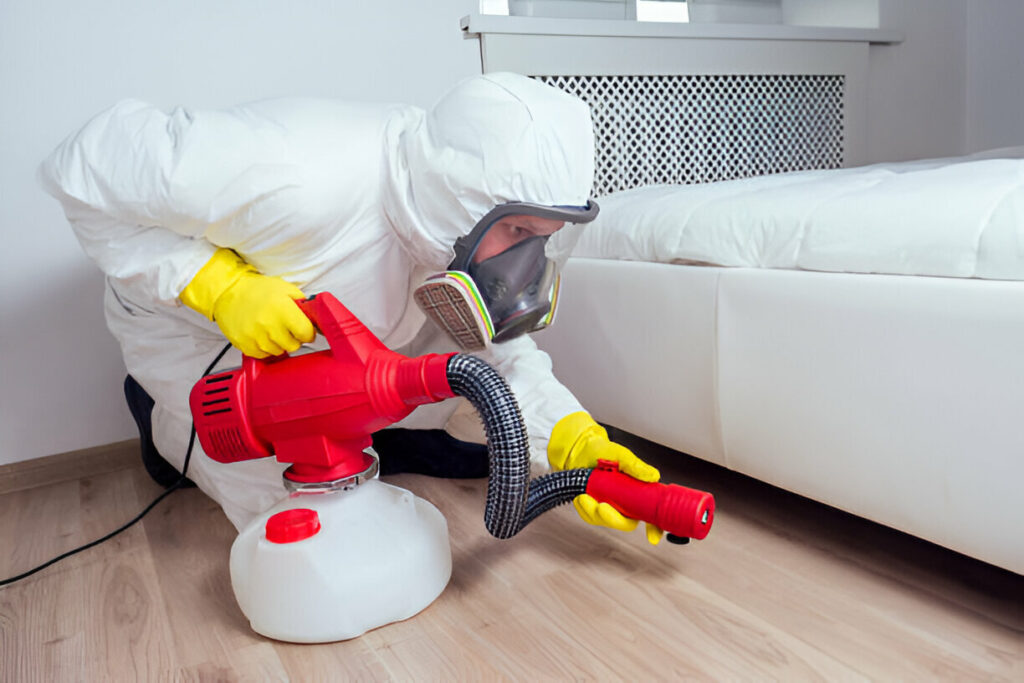
When it comes to bed bugs, your home can be a battleground. ‘Protect Your Home: Essential Steps for Bed Bug Control and Prevention’ provides you with the tools and knowledge needed to defend your space. By following the steps outlined in this guide, you can effectively identify signs of bed bug infestations, implement control measures, and maintain prevention practices. These essential strategies will help you safeguard your home and ensure a peaceful environment for you and your loved ones. So, don’t wait until it’s too late – take action to protect your home from these pesky intruders.
Identifying Bed Bug Signs
You might be dealing with bed bugs if you notice small reddish-brown bugs in your bed or furniture. These pesky insects are experts at hiding in cracks and crevices during the day and coming out at night to feed on your blood while you sleep. Bed bugs leave tiny dark spots on your sheets, molted skins, or a sweet, musty odor. It’s essential to act promptly if you suspect a bed bug infestation to prevent it from spreading throughout your home.
To confirm the presence of bed bugs, thoroughly inspect your mattress seams, headboard, and nearby furniture. Look for live bugs, eggs, or their exoskeletons. Bed bugs can also hide in electrical outlets, picture frames, or behind loose wallpaper. If you’re unsure about a potential infestation, consider hiring a professional pest control service for an accurate assessment.
Early detection is key to effective bed bug control. By recognizing these signs promptly, you can take the necessary steps to eliminate these unwelcome intruders and safeguard your home and peace of mind.
Implementing Control Measures
1. Begin by thoroughly decluttering and vacuuming your living space to remove potential hiding spots for bed bugs. Clutter provides numerous hiding spots for these pests, making it crucial to tidy up to expose any existing bed bug colonies. Pay close attention to areas near the bed, such as cracks in furniture, baseboards, and electrical outlets.
2. Wash all bedding, linens, and clothing in hot water and dry them on high heat to kill any bed bugs and their eggs. Consider using mattress and box spring encasements to trap any remaining bed bugs inside and prevent new infestations.
3. Utilize a vacuum with a HEPA filter to clean thoroughly, including carpets, rugs, and upholstery. Remember to empty the vacuum outside immediately after use to prevent bed bugs from returning to your home.
4. Seal any cracks or crevices in walls, furniture, and flooring to reduce potential hiding spots for bed bugs. Use caulk or sealant to close off these entry points and limit their ability to spread throughout your home.
Maintaining Prevention Practices
Regularly inspecting and cleaning your living space is crucial to maintain effective bed bug prevention. Start by regularly vacuuming carpets, rugs, and upholstery to remove any potential hiding spots for bed bugs. Pay special attention to cracks and crevices in furniture, walls, and baseboards where bed bugs can hide. Additionally, washing and drying bedding, linens, and clothing on high heat can help kill any bed bugs or eggs that may be present. Be sure to declutter your home and reduce the number of hiding spots for bed bugs. Seal any cracks or openings around windows, doors, and walls to prevent bed bugs from entering your home. Consider using mattress and box spring encasements to trap any bed bugs that might be present and prevent future infestations. Maintaining these prevention practices consistently can help protect your home from bed bugs and ensure a comfortable living environment.